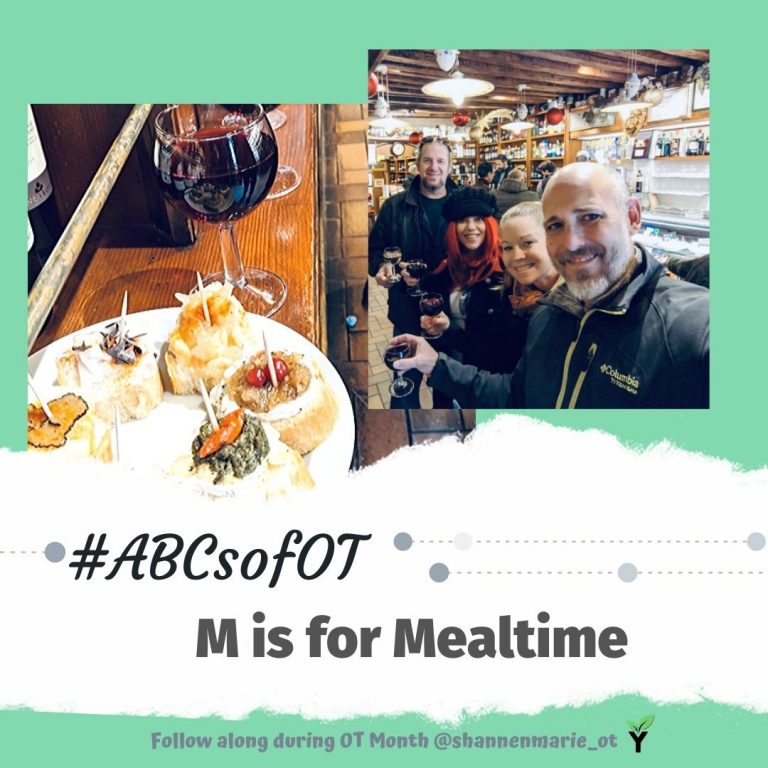Food and mealtime, for many people, are one of the most important occupations they participate in. But there can also be many boundaries that come up to limit people’s engagement in this meaningful activity.
Barriers that can impact eating and mealtimes include:
~ Oral motor delays
~ Sensory issues
~ Motor impairments
~ Cognitive delays
~ Access to groceries
~ Cooking & food preparation
~ Vision impairments
Fortunately, occupational therapy providers address these issues and get people able to or back to engaging in mealtime activities. In my line of work, I constantly address feeding issues with young children.
I have seen the impact that feeding challenges have on our clients and their families. I have seen the stressed mom or dad that is so worried that their child isn’t eating. I have seen children traumatized by being force fed or by being given food that they can’t safely manage. I have seen families ripped apart due to barriers during mealtime.
But I have also seen the positive. I have seen children respond to therapy and be able to begin to trust the sensory components of food and start to allow food in their space again or for the first time. I have seen children start taking a bottle or start eating solid foods. I have seen stress diminish so that families can engage in this meaningful activity again.
I have seen some of the worst and the best. What about you? Tell me about time you helped a client with a mealtime activity.
[Picture was taken in Venice, Italy with our friends Adam and Maya of Venice Bites Food Tours.]


